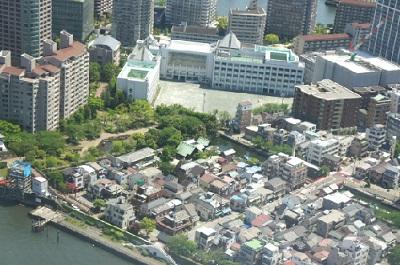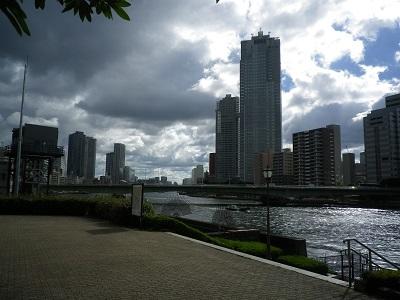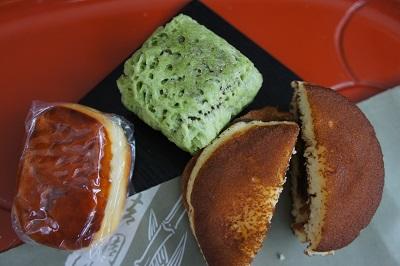In early summer, the view looked down from the window next to the elevator on the 46th floor of the St. Luke's Tower (St. Luke's Tower).![]()
![]()
 "Near Tsukuda 1-chome"
"Near Tsukuda 1-chome"
In late summer, the scenery from the Sumida River Terrace behind the Ishikawajima Lighthouse Remains Moniment at Tsukuda 1-chome ()![]()
![]() ...I hope St. Luke's Tower in the clouds of extreme weather this year.
...I hope St. Luke's Tower in the clouds of extreme weather this year.

![]() Tsukuda 1-3 chome and Tsukishima 1-3 chome are historic downtown surrounded by the Sumida River and Canals, adjacent to [River City 21, Harumi Triton Square, New City of High-rise Buildings]. Although it has been touristized, walking while feeling the wind and smell of the Showa era before the Edo era, Meiji, Taisho eras, and the war, I feel like I was standing on the historical stage of each era. The Japanese sweets shops here are the Futabaya and Furunogido, which opened before and after the Great Kanto Earthquake.
Tsukuda 1-3 chome and Tsukishima 1-3 chome are historic downtown surrounded by the Sumida River and Canals, adjacent to [River City 21, Harumi Triton Square, New City of High-rise Buildings]. Although it has been touristized, walking while feeling the wind and smell of the Showa era before the Edo era, Meiji, Taisho eras, and the war, I feel like I was standing on the historical stage of each era. The Japanese sweets shops here are the Futabaya and Furunogido, which opened before and after the Great Kanto Earthquake.
"Futabaya," Founded in 1868. The current Tsukuda 2-chome (5 minutes from Sumiyoshi-jinja Shirine to the Harumi Canal) opened several years before the Great Kanto Earthquake, and preserves the handmade techniques inherited from the previous generation. "Tsukuda Mochi", which has a specialty soft fertilizer and apricots, is delicious. This year, it will open a store at the Chuo-ku Industrial Culture Exhibition (navel exhibition).
 "Futabaya"
"Futabaya"
"Furunogido" is around the first street of Monja Street. It was founded in 1924, the year after the Great Kanto Earthquake. Sample Japanese sweets are lined up in the case. "Dorayaki" and "Kuriman" have a simple taste.
 "Furunogido"
"Furunogido"
Above

